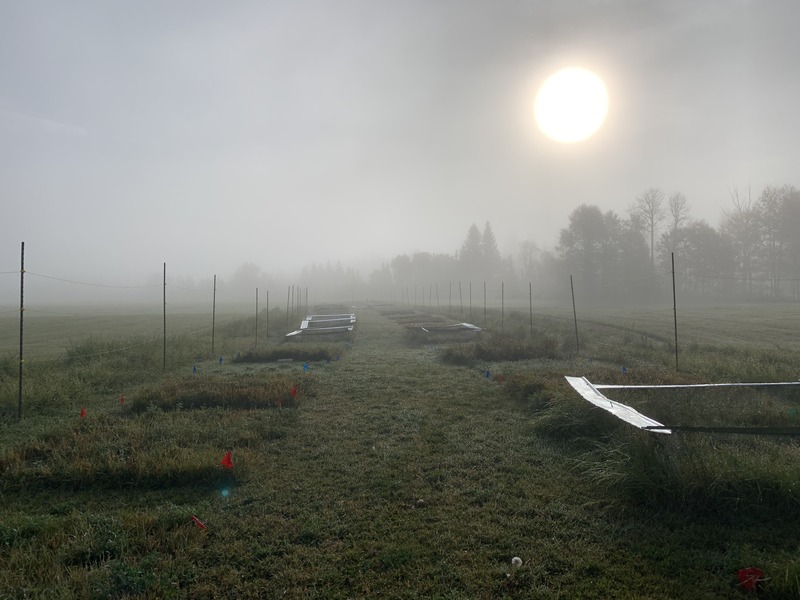Online Exhibition & People’s Choice
Worth 1000 Words: Online Exhibition and People’s Choice
Please check back at a later date for final results.
Worth 1000 Words provides an opportunity for TRU faculty, students and staff to illustrate their research. The photo competition was designed as a creative way of sharing and celebrating ground-breaking innovations, life-changing collaborations, and transformational creative journeys. A panel of adjudicators, which included Donald Lawrence, Professor, Visual Arts, Emily Hope, Education and Public Programs Director, Kamloops Art Gallery, and Bruce Martin, Associate Professor, Business Administration, poured over the entries and made their selections, which you will see below. Please continue to photograph your research journey. We look forward to seeing your entries in Fall 2021!.
Vote Now

Utilizing Traditional Indigenous Knowledge for Ecosystem Repair
Photographer: Brandon Williams
Utilizing Traditional Indigenous Knowledge for Ecosystem Repair
Photographer: Brandon Williams
Location of Photograph: Highland Valley Copper Mine
Date of photo taken: 05/23/2020
A man from the Nlaka'pamux nation, well versed in conducting prescribed burning, leads a fire crew at Highland Valley Copper (HVC) mine located just outside of Logan Lake.
This photo represents a unique partnership between the Teck operated HVC mine and the Nlaka'pamux peoples. Part of building this relationship rests on the intent to collaborate on the goal of restoring ecosystem function to that of a pre-mined landscape, allowing for the return of traditional land uses.
For several thousand years the southern interior Indigenous peoples developed sustainable management practices to take care of the land. These practices, which have been used for centuries, connect with what we understand today as fundamental ecological principles that are key in effectively managing our ecosystems. Prescribed burning represents one of these traditional practices, with use dating back to approximately 7000 years ago. Burning was typically completed by experts in the community often bestowed with the title of 'Fire keeper'. This practice was used to prevent vegetation buildup and tree encroachment on important grazing and hunting areas. Burning was also known to renew the landscape while promoting the germination and growth of desired plant species.
Shortly after European settlement in British Columbia, prescribed burning by Indigenous communities was halted as it represented a threat to the forestry industry.
This research blends traditional Indigenous knowledge of prescribed burning with contemporary fire ecology practices to re-implement the cultural use of prescribed burning while assessing its ability to restore disturbed mine lands.

Snake eyes
Photographer: Chloe Howarth
Snake eyes
Photographer: Chloe Howarth
Location of Photograph: Osoyoos, BC
Date of photo taken: 08/01/2020
Caption: A large male western rattlesnake tongue-flicks to ‘taste’ the air, allowing him to detect the scents of predators and prey (and field biologists!) in the air. This beautiful gold-eyed snake was seen basking outside of his overwintering den near Osoyoos, BC, on one of the last warm days of fall. He was observed during a den survey conducted as part of an ongoing mark-recapture effort in the region. After taking his photo, he was captured (following wildlife permits and animal care approved protocols), tagged, measured, and weighed, before being released to continue enjoying the late-season sun!

Snake Timeshare
Photographer: Chloe Howarth
Snake Timeshare
Photographer: Chloe Howarth
Location of Photograph: Osoyoos, BC
Date of photo taken: 08/01/2020
Caption: A western rattlesnake and a great basin gopher snake share close-quarters within an artificial ‘refugia’ structure. We built these underground structures along a section of drift fencing in Osoyoos, BC. The fencing was built to separate natural habitat from a busy campground in order to minimize human-snake interactions. Sometimes, though, snakes become exhausted and overheated trying to find a way through. These refugia provide both physical (from predators) and thermal refuge to snakes. We monitored the refugia with motion-censored cameras, allowing us a glimpse into the secret lives of snakes!

Chondrite Normalized
Photographer: Nancy Van Wagoner
Chondrite Normalized
Photographer: Nancy Van Wagoner
Location of Photograph: Lab (at home)
Date of photo taken: 01/27/2021
Caption: About 50 million years ago, Kamloops was surrounded by volcanoes. The purpose of our research is to determine the causes of this volcanic activity, how volcanism evolved in space and time, and whether it influenced past climates. One way of working out where the magmas originated from is to compare the geochemistry of the volcanic rocks with a type of meteor called a chondrite (chondrite normalized). The image is of a chondritic meteor magnified 100 times (field of view is 2 mm). The graph tells us about the composition of the mantle and how it was melted to produce the Kamloops magmas. I was taken by the way the graph follows the curve of the crystals.

Cutting Through the Fog
Photographer: Sarah Bayliff
Cutting Through the Fog
Photographer: Sarah Bayliff
Location of Photograph: Newton Ranch
Date of photo taken: 09/24/2020
Caption: The rising sun burns through the early morning fog above a TRU agricultural research site. This research site is used to examine the use of mowing to increase plant productivity and soil carbon of perennial cropping systems. The square plots seen in the photo are each cut at a different mowing height, ranging from 0 to 30 cm in 5 cm increments. The goal of this study is to determine which cutting height will stimulate the highest levels of aboveground and belowground plant production. Plant productivity is positively correlated with carbon sequestration. Therefore, increasing the productivity of agricultural fields has potential to increase sustainability as atmospheric carbon is sequestered within soil and plant material. Better understanding how mowing affects plant and soil characteristics will allow for land to be managed for optimum productivity and environmental sustainability.

Wet and wild research: Using irrigation to increase soil carbon
Photographer: Sarah Bayliff
Wet and wild research: Using irrigation to increase soil carbon
Photographer: Sarah Bayliff
Location of Photograph: Newton Ranch
Date of photo taken: 08/24/2020
Caption: A centre-pivot sprinkler system applies irrigation to an agricultural crop. In areas with drier climates, irrigation is often needed to produce large volumes of forage required for livestock operations. This study examines how irrigation can change levels of plant productivity and soil carbon by comparing plant and soil characteristics between areas that are actively irrigated and areas that haven't received irrigation for multiple years. Achieving higher levels of productivity and soil carbon is favourable for environmental sustainability as atmospheric carbon is able to be stored within the soil and plant material of agricultural fields. Gaining an understanding of how irrigation affects these variables will allow for this technique to be used to produce agricultural landscapes that are both productive and sustainable.
Vote Now
